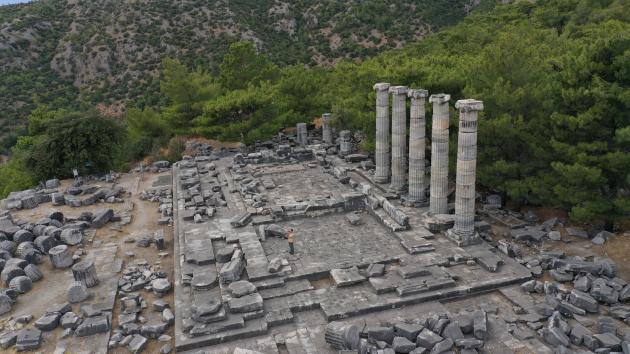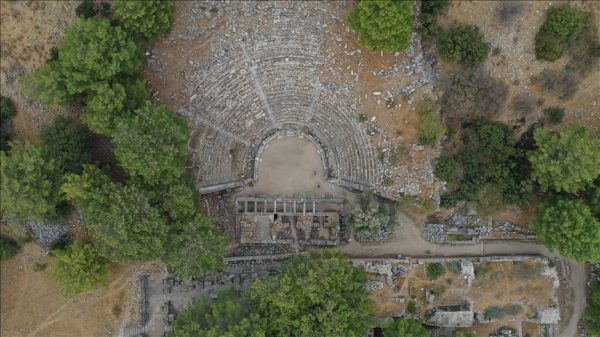A church dating back to 1,600 years ago was discovered in the Priene ancient city that is included in the UNESCO Tentative List and located in Turkey’s Aegean Aydin province, reports Anadolu Agency.
Ali Altin, an academic at Bursa Uludag University told Anadolu Agency that the church was probably the earliest one in the region, and unlike the other churches and temples discovered before, it was built for mass worship by the first Christian communities in the region.

“We found out that the ground of the church consists of small-sized stones brought together, which were covered with mosaic adorned with geometric motifs,” Altin said and noted that the inner walls of the building were covered with paintings lengthwise.
Altin added: “These wall paintings consist of several different layers, which tells us that the church was used starting from the first phases of early Christianity period up until late periods of the Byzantine era.”
Situated in an area used as a cemetery, the rectangular-shaped church is also known as “Pompeii of Anatolia” and of great importance for being built by the first Christian community in the Priene, as the studies reveal.
Excavations in the ancient city were launched by German archeologists in 1895, and various structures ranging from temples, theaters, an agora, public buildings, and shops to educational buildings have been discovered since then.
Priene, known as a region where science and arts flourished, was also home to famous Greek philosopher Bias of Priene, one of Greece’s Seven Sages, Altin said.
The ancient city attracts attention with the Temple of Athena Polias, a theater, the Temple of Demeter, a council house, the Sanctuary of Egyptian gods, and a Byzantine church.














